Your Guide to Mold Inspections in Whitehall Ohio
You might be surprised to learn how easy it is for mold to invade your home without even noticing. Often times, mold can form in basements, ceilings, behind walls and other places that you simply don’t see on a regular basis. By the time signs of mold have become visibly apparent, you may have a major problem on your hands. The best way to detect and address potential mold problems is by having Home Inspections LLC inspect your home for mold. They will be able to identify what types of mold are present and how pervasive the problem is in the Whitehall Ohio area. Therefore, will help you decide on the right course of action. If it seems like your allergies are worse than ever, your symptoms may not be the simply tied to seasonal changes. You could be living with mold and your health could be suffering. Get to the root of the problem with a hassle-free and affordable mold inspection. Call us Today and Schedule a Mold Inspection in Whitehall Ohio..
☏ Press to Call: Schedule a Home Inspection Now!Or Dial 1-800-241-1033 to schedule a home mold inspection in Whitehall Ohio
Mold Inspection in Whitehall Ohio: What to Expect
It might come as a surprise that Central, Ohio doesn’t require professional licensing for mold inspections. Literally anyone can call themselves a mold inspector and charge you whatever they want to “inspect” your home. If someone offers to do your mold inspection in Whitehall OH for a price that seems too good to be true, it probably is.
The Mold Inspection Professionals
Unlike some of our more questionable competitors, when we claim to be the best in mold inspections, we have the experience and licensing to back it up. We offer competitive rates for mold inspection in Whitehall OH. Therefore, you can enjoy expert services at an affordable price. No gimmicks. No short cuts. Just quality service, years of experience and a commitment to excellence in the Central and Whitehall Ohio area.
The Mold Inspection Equipment
Our mold inspection equipment is top notch. We use the smallest and quietest air sampling equipment in the industry. The Zefon Bio-Pump Plus requires minimal set up and is able to collect and identify accurate air samples. Within 72 hours, we will provide you with a mold inspection lab result report, to help you establish a plan of action.
What is an Indoor Air Quality Mold Inspection Test and Sampling?
Air samples are used to test for mold and air quality because mold spores are small enough that they cannot be seen with the naked eye. Testing indoor air samples is the best way to identify the types and concentration of mold in your home. This type of testing is minimally intrusive and allows the expert to quickly collect samples. The mold inspection device is placed in the center of the room where experts suspect mold is growing. Next, an air pump works to collect air samples. The entire process is repeated in at least two rooms in order to ensure accurate readings and help pinpoint the exact location of the mold. The typical mold inspection will last no more than 30 minutes and will gather enough air to send to the lab for analysis.
Why Do I Need an Indoor Air Quality Mold Inspection Test and Sampling?
Mold growth is a common problem that can cause a whole host of health issues. If you have recently experienced any flooding due to record rainfall or plumbing problems, you will want to have your home tested. Even persistently high levels of humidity can cause moisture to build up and create the perfect breeding ground for mold and fungi. While you may notice visible signs of mold accumulating in damp, dark places, airborne mold spores are too small to actually see. Therefore, you could be exposed to mold without realizing that your air is contaminated, which is why mold inspection in Whitehall OH is highly recommended.
How Do I Read the Results of My Indoor Air Quality Mold Inspection Test Sample?
Any reputable mold inspection professional will provide you with air quality results that go beyond simply reporting raw data that the average person doesn’t know how to interpret. The lab report should include an explanation of the findings and recommendations for addressing any problems. Reading raw results can also be difficult because labs use different methods to present data.
What Typed of Tests are Performed During a Mold Inspection?
By far the most common and least intrusive way to test for mold is through an air quality test. Air samples are collected from at least two areas where mold may be present. The samples are then allowed to incubate in a Petri dish before being tested. In some cases, inspectors may choose to conduct surface sampling by collected spores that have settled on indoor surfaces. Finally, more extreme cases of mold may require bulk sampling where large pieces of material are removed for inspection.
The Mold Inspection Air Quality Test and Why to Perform One?
A mold air quality test is a simple way to collect and analyze mold levels in your home. If you are experiencing respiratory or other health problems, it is a good idea to have your home tested. Your issues could be the result of mold and the consequences can be far-reaching. It is also a wise decision to invest in a mold inspection in Whitehall OH if you have experienced flooding, live in a region with high humidity or you are noticing a build-up of condensation in your home and HVAC system.
The Mold Inspection Lift Test and Why we use this Method
While collecting an air sample is an easy and effective way to test during a mold inspection, in some cases, a mold lift test is the more appropriate choice. Working with a mold expert will help ensure your home is tested correctly using the best possible methods. A mold lift test can provide vital information including: how far mold spores are traveling from the source, whether mold growth is happening on a microscopic level that is not yet visible and whether the mold has contaminated other areas such as your HVAC system.
If our mold inspection experts determine that a mold lift test is necessary in order to determine breadth of your mold problem, you can rest assured that the process is fairly straightforward. A specialist will use a testing strip that has a sticky surface to carefully collect samples from surfaces throughout your home. It is important to handle the samples carefully and store them properly in order to avoid contamination that can produce inconclusive results.
Our technicians are well versed in sampling best practices that ensure every sample arrives at the laboratory completely intact. While there are DIY mold lift kits on the market, they don’t come close to the level of accuracy that our experts can provide. With such affordable prices, it makes sense to take advantage of years of experience that will ensure that the test is done right the first time. If you have mold in your home, the last thing you want to do is waste time and money while also compromising your health. Get accurate mold inspection results quickly so that you can start taking the necessary steps to clean your home and rid it of mold.
What Do “Spore Counts” Mean?
Spore counts tell us how many and what kind of spore are found in an air sample. Since mold spores naturally occur everywhere, it is important to compare indoor and outdoor levels. Air samples can also be influenced by a variety of factors. For instance, when other inspections are happening simultaneously, it can raise the spore count because places that are not normally opened are being disturbed. In addition, things like recent dusting, pets coming in from outside or filter changes can also affect the tests results. Your mold inspector should take all of these factors into account both when testing and interpreting results of your mold inspection.
Spore Counts:
- 0-50 spores - These are only trace levels and are not an issue. Even Stachybotrys (Otherwise, known as “Black Mold”) is not considered an issue at these levels if the sample does not also contain water markers like Chaetomium and Fusarium or high levels of Penicillium/Aspergillus.
- 50-200 spores – This spore count is still considered low. The toxic mold species Stachybotry (Otherwise, known as “Black Mold”) and Memnoniella are the only species that are considered an issue at this level.
- 200-500 spores - Up to this point, the most common species (Penicillium/Aspergillus, Cladosporium and Curvularia) are still not an issue and considered within a normal range.
- 500-1500 spores - Sometimes the Penicillium/Aspergillus & Cladosporium levels exist is this range without causing concern. If no water intrusion or mold issue is found during the inspection, these levels can be caused by normal life in an enclosed environment.
- 0-1500 spores: Penicillium/Aspergillus & Cladosporium are often found in this range within a closed environment and are not considered dangerous. At this point, if a visual inspection does not uncover water signs, it isn’t an issue unless there is toxic mold present.
- 1500-3000 spores - This is where the grey area begins. When levels reach this point, there may be an issue that needs to be addressed unless there is a corresponding number in the outdoor sample. If nobwater intrusion or mold issue is found during the inspection these levels can be achieved by a dusty home or A/C system.
- 3000-10,000 spores - Unless there is a corresponding number in the outdoor sample, this is the point where some remediation may be necessary. If a mold spore source has been identified, then the area needs to be cleaned. If there was no water intrusion or mold issue found, the home may need to be cleaned and the duct system should be evaluated.
- 10,000-25,000 spores - Unless there is a corresponding number in the outdoor sample, a mold spore source has usually been identified and remediation of the area is needed. If there was no water intrusion or mold issue found, the duct system may need to be cleaned and/or a general "Spring Cleaning" ; of the home.
- 25,000-75,000+ spores - When spore levels are at this point, a mold issue will be easy to identify. Clean up will be required and should be performed by a professional mold inspector.
- 25,000+ at this high a level, there is a significant mold problem and a professional should be called in to address the issue.
- 75,000-1,000,000+ spores - When spore levels reach this point, a mold issue will be evident. Remediation will be required and needs to be performed by a professional mold inspector.
Click Here: VIEW A SAMPLE REPORT
Mold Inspection in Whitehall Ohio: Meet the Enemy
The wide world of mold is made up of virtually thousands of species and subspecies. Some are found in soils or tree bark while some are happiest setting up shop in our homes and businesses. Schedule a mold inspection in Whitehall Ohio.
- Alternaria - Is a common allergen in humans. Mold inspections find that it grows indoors and causes hay fever or hypersensitive reactions that sometimes lead to asthma.
- Ascospores – Common in outdoor gardens, nature and causes possible allergens found during a mold inspection in Whitehall OH.
- Basidiospores - Spores that are produced by a class of fungi called basidiomycetes. They can be discovered during a mold inspection in Whitehall OH. They have the potential to produce a variety of toxins, and cause allergens hay fever, asthma, eczema, pneumonitis, allergic alveoltis, fatigue and runny nose.
- Botrytis – Airborne fungus found during a mold inspection, that attacks houseplants. This fungus can cause allergies, hay fever, asthma and hypersensitivity pneumonitis.
- Bipolaris / Drechslara - These groups of fungi found during a mold inspection, constitute the most commonly reported causes of allergic fungal sinusitis.
- Epicoccum - Often found growing on a variety of building materials including but not limited to paper, textiles, and insects found during a mold inspection. Some people may experience hay fever and or asthma.
- Fusarium - Fusarium is found in mold inspections. It's often found on rotting household plants and causes possible allergens.
- Stemphylium / Ulocladium - Often found in soil, wood, decaying vegetation during a mold inspection. Some species found on leaves are plant pathogens. Some people may experience hay fever or asthma.
- Penicillium/Aspergillus - The most common mold species to show up in Indoor Mold Inspection Air Samples. Most of the hundreds of sub-species are allergenic with only a few that are toxic. This group of species will grow with only the humidity in the air as its water source. An A/C failure will allow this mold to start growing on walls, furniture and clothing.
- Cladosporium - The most common mold species found during a mold inspection and is considered to be an allergenic.
- Curvularia – This is another common allergenic species that can be seen in a mold inspection.
- Chaetomium - This is a common water marker found during a mold inspection, that usually indicates wet paper and/or drywall.
- Stachybotrys – An excellent water marker and the most common toxic mold species. Stachybotrys
- Chartarum (Otherwise, known as “Black Mold”) is the sub-species found during a mold inspection, that’s the subject of all the “60 Minutes” type news programs and all of the internet hype. Not all sub-species are toxic. These species need a direct water source to grow. This includes a window, roof or plumbing leak.
- Memnoniella – A sister mold to Stachybotrys. Can be found during a mold inspection. The two species will grow together. It is also considered toxic.
Common household molds:
Species such as Penicillium Aspergillus and Cladosporium are extremely common and are widely found in man-made structures. They will grow on most surfaces on nothing more than the humidity in the air. Both are known to cause allergic symptoms. This is what we look out for during a mold inspection in Whitehall Ohio.
Alternaria, Bipolaris Drechslara, Epicoccum and Curvularia are also fairly common to be found during a mold inspection, and cause a variety allergic and hypersensitive reactions.
Indoor plant mold:
Fusarium is found on rotting vegetation. We see this during mold inspections in Whitehall Ohio. You’ll find it on that potato that fell behind the shelf and on dead houseplants. It could be a source of allergen and it is something we can find during a mold inspection.
Black mold and other toxic molds:
Toxic black mold or black mold is a name commonly used for Stachybotrys chartarum. It is one of the most infamous toxic molds because it can grow in houses and is extremely dangerous to humans. Stachybotrys is known as a toxic mold because it produces toxins called mycotoxins. Basidiospores and Memnoniella are toxic and will provide a serious health risk. , Stachybotrys Chartarum (Otherwise, known as “Black Mold”) is the monster you see on TV where they have to seal off the building and wear hazmat suits. This is the stuff nightmares are made of. Therefore you should call us for a mold inspection in Whitehall Ohio before it's too late!
Water Marking Molds:
Chaetomium – This is a great water marker found during a mold inspection. It will show you exactly where the leaks are because it grows abundantly where there is a water source. Stachybotrys (Otherwise, known as “Black Mold”) – Not all species of Stachybotrys are toxic. However, they are the most commonly found toxic molds. Since they too require a direct water source, they are good for marking leaks. Moisture and Mold Problems: Preventing and Solving Them in Your Home. Mold loves water. Keeping your home or business dry is the most important thing to preventing the growth of mold. We will inform you of any of these conditions found during a mold inspection in your Whitehall Ohio home.
- Humidity: In some areas, just the humidity in the air is enough to encourage mold growth.
- Condensation: Where there is condensation, there is water. Where there is water, there could be mold lurking.
- Leaks: basements, roofs, pipes and appliances are all potential sources for water leaks. These create optimal mold conditions.
- Floods: floods create a damp environment in which mold can grow and it may cause hidden mold colonies inside the walls themselves.
- Water stains: yellow to black stains on the walls, celling or floor are a good indication that you have mold growing.
- Poor ventilation: look for rooms with poor ventilation. Mold loves stuffy old attics.
- History: a history of mold is a red flag that there may be a mold problem again.
- Peeling paint: paint cracks, peels and bubbles when there is water present.
- Rusting metal: if the metal in your home (pipes, nails, etc.) is rusting, that’s a good indication there is moisture in the air.
- Warped surfaces: Wood and drywall bow and warp when humid.
- Dust: a lot of dust in the air is another mold sign. Dust and mold are buddies and are often found together.
- A damp smell when you turn on your AC.
Also check for these during a mold inspection:
- Blocked Gutters
- Damp basement
- Standing water
Mold has three basic needs to grow big healthy colonies in any environment:
- Moisture: remember that high humidity is enough.
- A food source: this varies but some mold thinks dust is yummy.
- Still air: closets, basements and crawl spaces where the air is most still is party central for the mold communities.
Schedule Your Mold Inspection in Whitehall Ohio Today
Mold is found nearly all over Whitehall, Ohio, so it may be necessary to schedule a mold inspection in Whitehall OH to find out if your home has mold. It reproduces by sending tiny spores through the air to find another place to colonize. Colonies can be virtually any color and range from kind of fuzzy to downright slimy. Mold is a champion of nature; it plays an important role in the decomposition of dead matter to create fertile earth for new growth. Outside, you are exposed to small amounts of airborne mold spores, every single day with no side-affects and at that level, there isn’t any need for concern. However, under optimum conditions, mold can grow out of control and exposure to mold at these levels can leave you feeling sick and miserable. Call us to schedule a mold inspection.
Mold Inspection in Whitehall OH Makes for a Healthy Home
Mold is more than just unpleasant to look at; it can cause permanent damage to your home and affect your health. Some molds are toxic and cause serious medical conditions. Most molds badly affect people with allergies or asthma; and if there is enough of it in the air, most common molds irritate your eyes, nose and throat. Therefore, it may be to your advantage to schedule a mold inspection in Whitehall OH.
While there are people who are not affected at all by mold, for those with a mold sensitivity, just being around mold will cause symptoms similar to a cold, flu or allergy: such a coughing, sneezing, runny nose, red, or puffy eyes and a rash may appear wherever any skin was exposed to it. The more serious the allergy, the more serious the symptoms. You will want a mold inspection done because exposure to airborne mold spores is a serious risk for people with asthma or seasonal allergies.
Don’t wait another day to confirm whether or not you or your family are exposed to Mold, please give Home Inspections LLC a call today to assist you with a expert Mold Inspection in Whitehall Ohio!
Examples of What's Found During a Mold Inspection in Hilltop OH
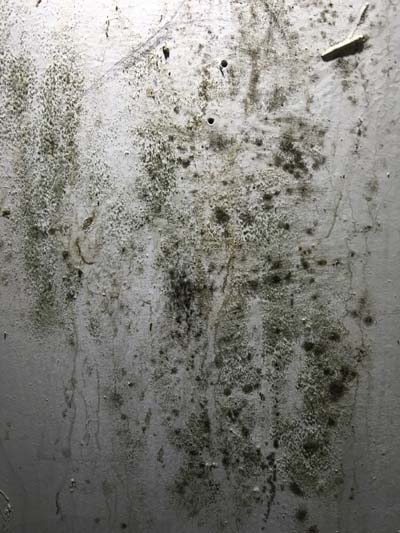
Mold on the drywall found during a mold inspection in Hilltop Ohio
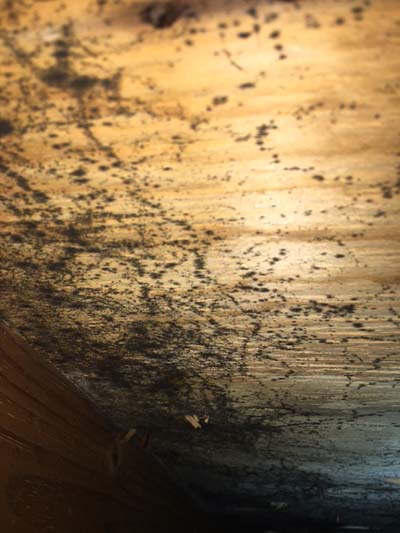
Mold in attics found during a mold inspection in Hilltop Ohio
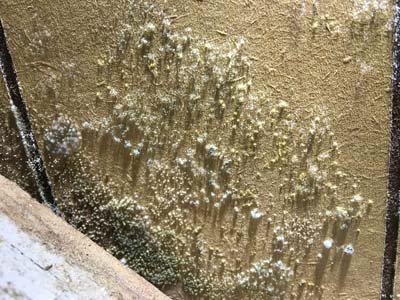
Mold in the basement found during a mold inspection in Hilltop Ohio
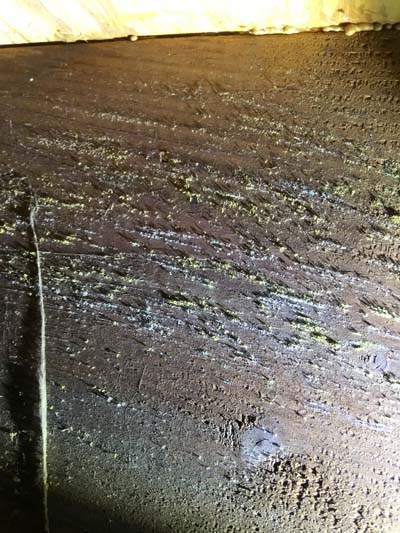
Mold in the crawlspace found during a mold inspection in Hilltop Ohio
Mold Inspection Throughout Hilltop Ohio and Central Ohio
- Columbus
- Dublin
- Powell
- Worthington
- Mold Inspection in Hilliard Ohio
- Hilliard
- Westerville
- New Albany
- Gahanna
- Reynoldsburg
- Blacklick
- Grove City
- Grove Port
- Upper Arlington
- Whitehall
Give us a call for top quality Mold Inspection in your Whitehall Ohio and Central Ohio area! 1 (800) 241-0133!
Thorough Mold Inspection in Hilltop Ohio
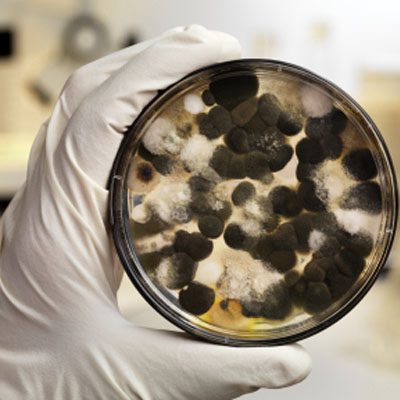
Home Inspections LLC: mold inspection
Your Mold Inspection Shouldn't Wait! Call us Today!
☏ Press to Call: Schedule a Home Inspection Now!
Or Dial 1-800-241-1033 to schedule a mold inspection for your Hilltop Ohio home
Mold Inspection in Hilltop OH Testimonials
Very polite, professional and thorough! Very knowledgeable and didn't make me feel like any question was too much or too dumb. I would recommend to anyone looking for an inspection for any reason! Greg was my inspector and he did an amazing job and if I ever need this done again, definitely would ask for him!

Contact us now for mold inspections service in Hilltop Ohio

Providing quality mold inspections in Hilltop Ohio

Serving the entire Hilltop Ohio neighborhood with thorough mold inspection service
About Hilltop Ohio
Zip Codes: 43204, 43222, 43223, 43123 and 43228
Area Codes: 614
Population: 67,781(2014)

Fun Fact About Hilltop OH
Hilltop is one of the largest neighborhoods in Columbus, Ohio which is located west of the Franklinton area. The Greater Hilltop area contains newer and historic neighborhoods, schools, various stores, industrial areas, and recreational facilities.
Distance From Home Inspections LLC to Hilltop OH
We are approximately 21 min (13.3 miles) via I-270 S Fastest route, the usual traffic
Home Inspections, LLC715 Shawan Falls Dr, Dublin, OH 43017
Get on I-270 S
4 min (1.5 mi)
Follow I-270 S to US-40 E/W Broad St in Lincoln Village. Take exit 7A from I-270 S
9 min (9.9 mi)
Continue on US-40 E. Drive to Demorest Rd in Columbus
6 min (1.9 mi)
Hilltop
Columbus, OH
Home Inspections LLC Serves Hilltop Ohio
We proudly serve the neighborhood of Hilltop with the best quality mold inspections! Be sure to schedule your mold inspection in Hilltop Ohio now!
